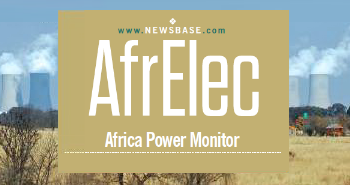South Africa’s president clarifies gas responsibility sharing between two ministries

What? The recently announced division of responsibilities between two newly established departments within South Africa’s Cabinet leads to new concerns, especially in relation to the country’s developing gas sector.
Why? One of major concerns is the potential for mixed signals on key issues from the heads of different departments.
What next? An integrated energy plan is essential as the foundation for other energy planning efforts. There is also a need for focused attention on immediate challenges, such as securing short-term gas supplies.
South Africa’s President Cyril Ramaphosa has clarified the division of responsibilities between the Ministry of Electricity and Energy and the Ministry of Mineral and Petroleum Resources with regard to the country’s nascent gas sector.
The split of the former Department of Mineral Resources and Energy (DMRE) under the leadership of the African National Congress (ANC) ruling party’s stalwart Gwede Mantashe into two separate ministries has been broadly welcomed.
However, there are concerns over undue complexity, especially concerning natural gas, which many view as a cleaner fuel in the transition from coal and oil to renewable energy sources, News24 reported on August 29.
The clarification from the Presidency for the division of powers between the two ministries was announced late on August 27. This follows the establishment of a new Cabinet under the coalition Government of National Unity (GNU) on June 30, when the Electricity and Energy portfolios were merged under Kgosientsho Ramokgopa. A separate portfolio of Mineral and Petroleum Resources was set up under Mantashe.
Although there was significant uncertainty and speculation about how the responsibilities would be divided, the announced transfer of legislation has provided clarity. However, it has also sparked some concerns.
Some critics see Mantashe’s new role as a demotion, but he has expressed enthusiasm for it, noting that it would allow him to concentrate more on petroleum and other fossil fuels, which, he said, had previously “played second fiddle” to renewable energy.
Division of powers
According to the Presidency, the legislative powers transferred to Mantashe’s ministry will include the Petroleum Products Act, the Petroleum Pipelines Act, the Central Energy Fund Act, the Mineral and Petroleum Resources Development Act, the Mine Health and Safety Act and the Precious Metals Act, among others.
Another important change is the transfer of oversight for the state-owned power utility Eskom to Ramokgopa’s ministry from the Ministry of Public Enterprises, which will cease to exist, says News24.
Additionally, Ramokgopa will also oversee energy planning as his ministry assumes the powers and functions of the National Energy Act, Electricity Regulation Act, and National Energy Regulator Act. Furthermore, the Nuclear Energy Act, the Gas Act, and the Gas Regulator Levies Act will also fall under his remit.
In the meantime, the DMRE will continue to exist until the legislation and relevant human and financial resources are transferred to the new ministries, the Presidency said.
Key concerns
However, this new division of responsibilities has led many in the energy industry to question how it will all come together, especially in relation to the country’s developing gas sector.
While the division of powers might be politically logical, it did not make sense from a value chain analysis perspective, noted Craig Morkel, chairperson of the Gas Economy Leadership Team at the South African Oil & Gas Alliance.
A major concern is the handling of pipeline-related issues, as the National Energy Regulator Act is under Ramokgopa’s authority, while pipeline legislation falls under Mantashe.
“We, as an industry association, would like to sit down with government in an appropriate forum where we will deal with certain policy issues, planning issues, and procurement issues to realise what would eventually become the gas master plan,” Morkel said, as quoted by News24. “In terms of pipeline activity, this is where the greatest risk is because this is where there's an overlap between the work of DMPR and DOEE.”
According to Morkel, this situation creates uncertainty, particularly regarding the permitting of pipelines and other midstream infrastructure.
Complicating matters further is another state-owned entity Transnet and its pipelines division, which now falls under the Department of Transport. This department will need to collaborate with the state-run gas development agency iGas, which is part of Mantashe’s Central Energy Fund (CEF) and holds a stake in the Rompco pipeline that supplies gas from Mozambique. “They will need to do so better than they've done in the past,” Morkel said.
This is particularly concerning as South Africa’s industrial users, who are interested in increasing gas usage to lower emissions, are facing a dwindling supply of piped gas owing to Sasol’s offshore gas fields in Mozambique running dry.
Additional challenges
According to Morkel, a major concern is the potential for mixed signals on key issues from the heads of different departments. Also, the planning and coordination that will be required across ministries and regulators on critical areas and issues, are likely to present additional challenges.
Jaco Human, executive director of the Industrial Gas Users Association of Southern Africa (IGUA-SA) acknowledged that much thought had gone into splitting powers across the portfolios. However, “there's still a bit of cross-pollination, which is not sufficiently addressed, particularly in the gas space,” he said.
According to Human, as South Africa strives to become a gas economy, there will be some massive decisions that need to be made by the government from a policy perspective and a gas market planning perspective, which will include upstream developments and downstream commitments.
Human argues that everything related to gas should be incorporated into one portfolio, in the same manner that everything dealing with electricity now sits under one umbrella. “I think it just makes sense to us to do the same with gas,” Human pointed out, “particularly if integrated energy planning also sits with the Minister of Energy.”
An integrated energy plan is essential as the foundation for other energy planning efforts, according to Human. The industry was encouraged by early signals from Ramokgopa, indicating that the current gas master plan is impractical and needs revision, he said.
There was also a need for focused attention on immediate challenges, such as securing short-term gas supplies, as industrial users face a potential shortage, he added.
The Presidency confirmed that Mantashe’s old department, DMRE, will remain in place until the necessary legislation, as well as human and financial resources, are transferred.
Additionally, a Memorandum of Agreement will be established to ensure that the DMRE provides the needed support to the Minister of Electricity and Energy for the rest of the 2024-2025 financial year, or until a new Department of Electricity and Energy is fully operational.



Follow us online